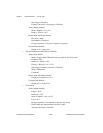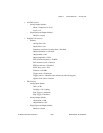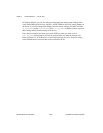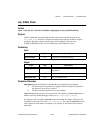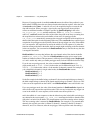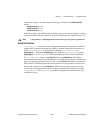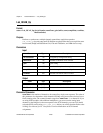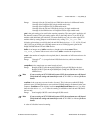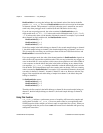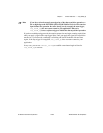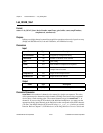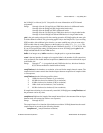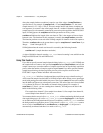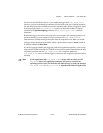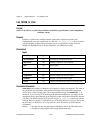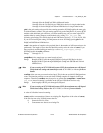
Chapter 2 Function Reference — Lab_ISCAN_Op
NI-DAQ FRM for PC Compatibles 2-268
©
National Instruments Corporation
finalScanOrder is an array that indicates the scan channel order of the data in the buffer
passed to
Lab_ISCAN_Op. The size of finalScanOrder must be at least equal to the number
of channels scanned. This parameter is valid only when the error is returned to zero and is
useful only when pretrigger mode is enabled (Lab and 1200 Series devices only).
If you do not use pretrigger mode, the values contained in finalScanOrder are, in
single-ended mode, n-1, n-2, ..., 1, 0, in that order, and in differential mode, 2 (n–1), 2 (n–2),
..., 1, 0, in that order, where n is the number of channels scanned. For example, if you scanned
three channels in single-ended mode, the finalScanOrder returns:
finalScanOrder[0] = 2.
finalScanOrder[1] = 1.
finalScanOrder[2] = 0.
So the first sample in the buffer belongs to channel 2, the second sample belongs to channel
1, the third sample belongs to channel 0, the fourth sample belongs to channel 2, and so on.
This is exactly the scan order you would expect from the Lab and 1200 Series devices and
finalScanOrder is not useful in this case.
If you use pretrigger mode, the order of the channel numbers in finalScanOrder depends on
where in the scan sequence the acquisition ended. This can vary because the stop trigger can
occur in the middle of a scan sequence, which causes the acquisition to end in the middle of
a scan sequence so that the oldest data point in the buffer can belong to any channel in the
scan sequence.
Lab_ISCAN_Op
rearranges the buffer so that the oldest data point is at index
0 in the buffer. This rearrangement causes the scanning order to change. This new scanning
order is returned by finalScanOrder. For example, if you scanned three channels, the original
scan order is channel 2, channel 1, channel 0, channel 2, and so on. However, after the stop
trigger, if the acquisition ends after taking a sample from channel 1, the oldest data point
belongs to channel 0.
So finalScanOrder returns:
finalScanOrder[0] = 0.
finalScanOrder[1] = 2.
finalScanOrder[2] = 1.
Therefore the first sample in the buffer belongs to channel 0, the second sample belongs to
channel 2, the third sample belongs to channel 1, the fourth sample belongs to channel 0,
and so on.
Using This Function
Lab_ISCAN_Op initiates a synchronous process of acquiring A/D conversion samples and
storing them in a buffer.
Lab_ISCAN_Op does not return control to your application until
NI-DAQ acquires all the samples you want (or until an acquisition error occurs). When you
use posttrigger mode, the process stores count A/D conversions in the buffer and ignores any
subsequent conversions.



